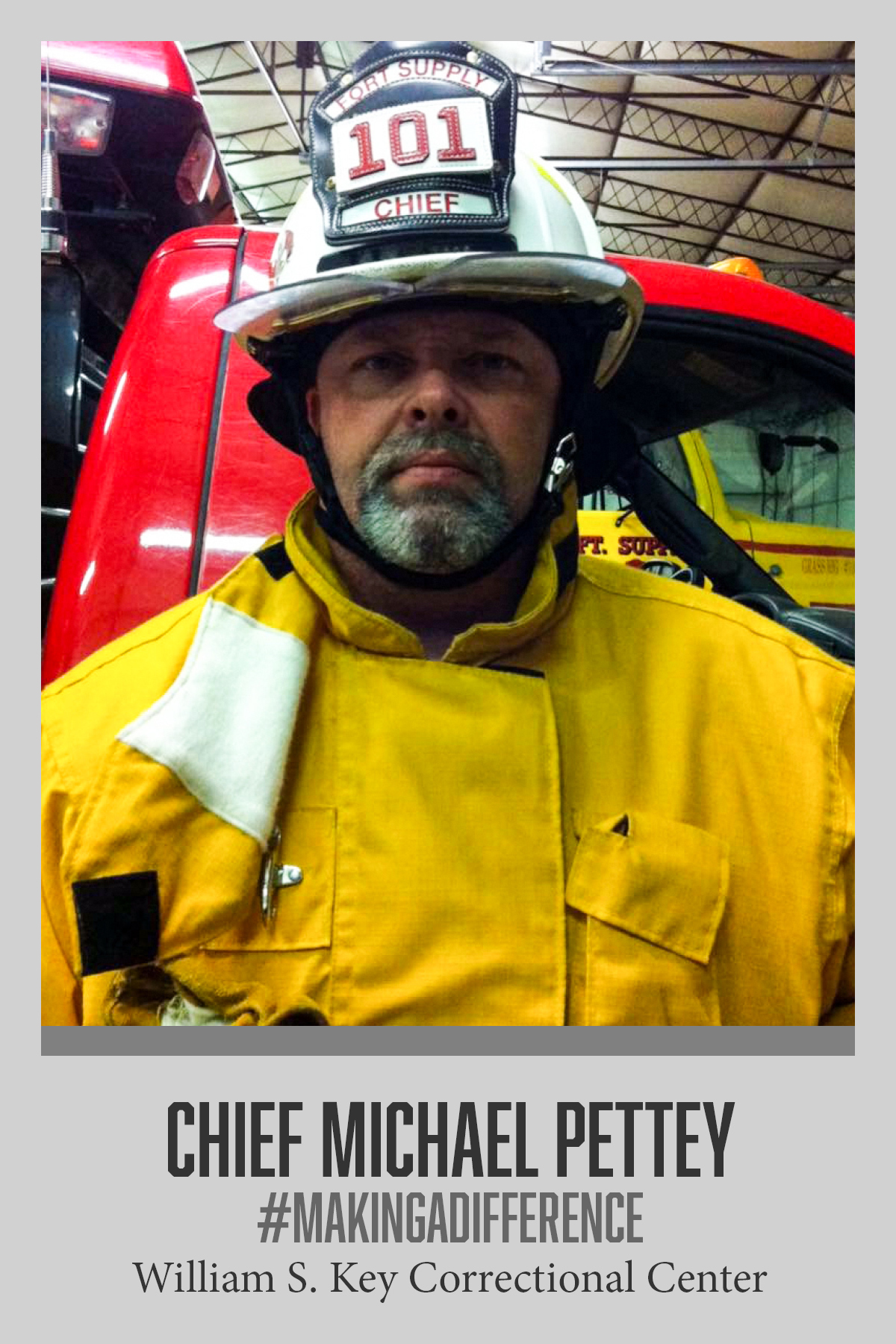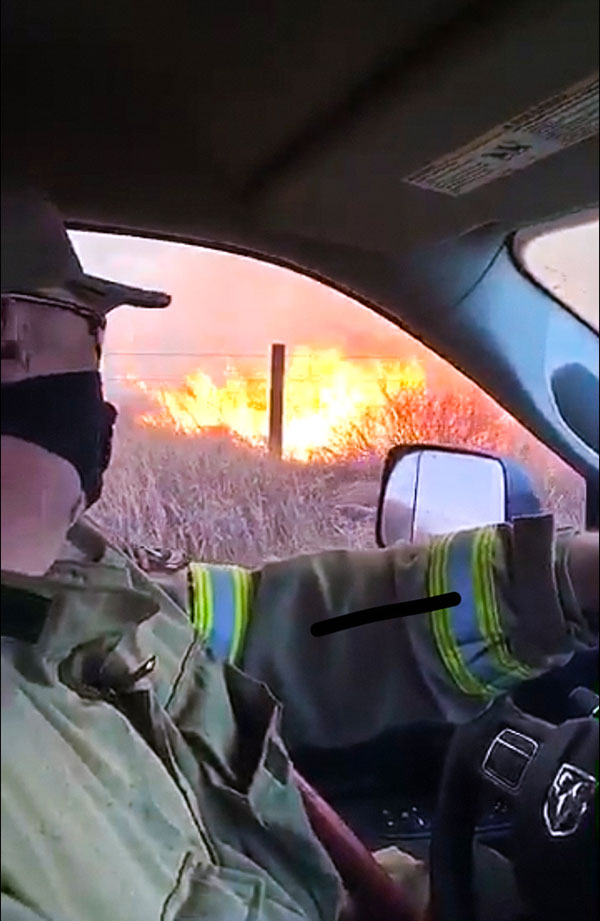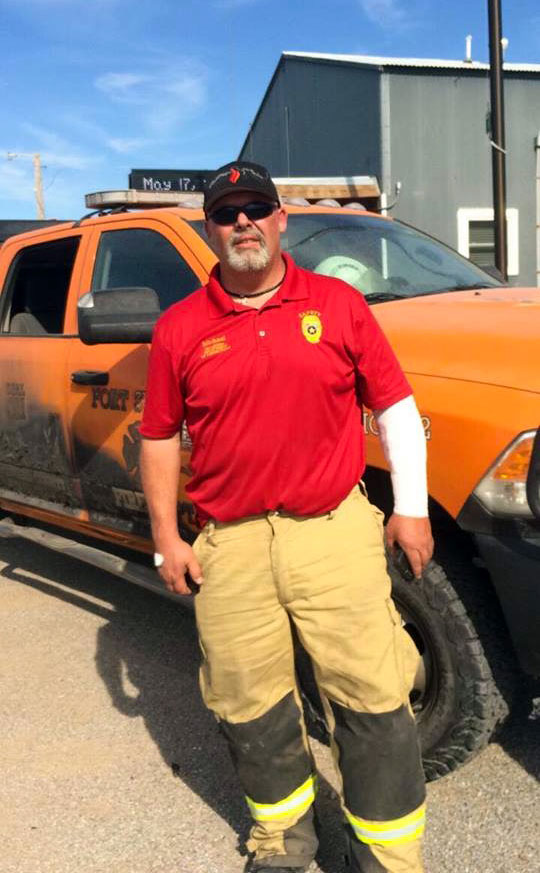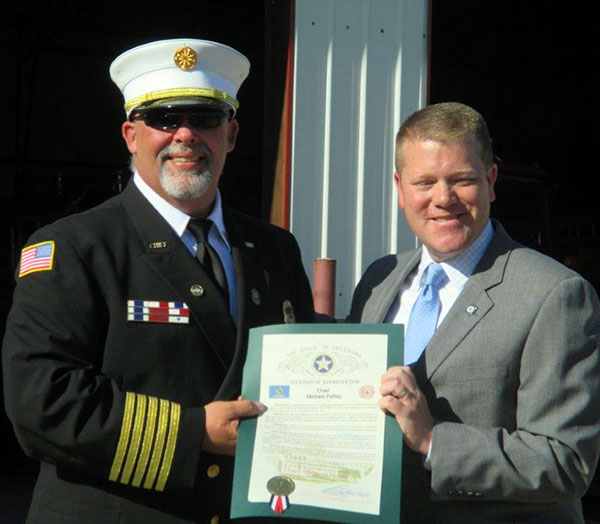 Most Oklahoma Department of Corrections facilities are in rural parts of Oklahoma. Many of the people who work them also serve Oklahomans in a variety of other ways.
Most Oklahoma Department of Corrections facilities are in rural parts of Oklahoma. Many of the people who work them also serve Oklahomans in a variety of other ways.
One big way is volunteer firefighting. The state’s fifth-largest agency has hundreds of staff members who are volunteer firefighters, taking calls 24-7 on everything from helping injured motorists in car wrecks on rural highways to fighting wildfires in blistering heat.
Chief Michael Pettey in Fort Supply is one of those. He caught the firefighting bug decades ago when he was helping fight a blaze on D Unit at William S. Key Correctional Center, a minimum security prison for men where he’s worked since 1991.
“I’ve loved it ever since,” Pettey said, whose 25-year-old son is also a firefighter with the Fort Supply Volunteer Fire Department.
The safety consultant at William S. Key said he’s learned long ago that conventional wisdom and fire don’t mix.
That reared its head in a big way last spring, when fires scorched thousands of acres across Western Oklahoma.
 Pettey was headed back from a monthly safety inspection at Bill Johnson Correctional Center in Alva. Storms were brewing, and he saw smoke on the east horizon after a big lightning strike.
Pettey was headed back from a monthly safety inspection at Bill Johnson Correctional Center in Alva. Storms were brewing, and he saw smoke on the east horizon after a big lightning strike.
He checked in with his dispatcher to see if anyone had reported a fire, but they hadn’t heard anything.
When he got back to William S. Key, he decided to head to the station, fire up his grass rig (a one-ton Dodge Ram with a pump and hose attached to it) and go see what was cooking.
The facility later called. There was a growing “wildland” fire (about ¼ of a mile wide) east of the facility. After calling for backup, he was assessing the situation when suddenly the wind, blowing along at a leisurely 10 miles an hour, began gusting up to 60.
That stoked the blaze into a wall of withering orange flames – coming right toward him and scorching everything in its path.
He had to move, but there was one problem. His big Dodge truck was stuck in the fine sand for which the area is known.
“I’ve been asked, ‘Were you scared?’” Pettey said. “I’ve been doing this long enough. I knew what I had to do.”
 He feverishly worked to dig his truck out as the fire bore down, eventually getting enough sand out of the way to free his truck tires, but he could only move along inches at a time. The fire had grown at least 10 times more intense, he said.
He feverishly worked to dig his truck out as the fire bore down, eventually getting enough sand out of the way to free his truck tires, but he could only move along inches at a time. The fire had grown at least 10 times more intense, he said.
He knew he couldn’t get away.
“That’s how people get killed,” Pettey said. “They try to out run it, and they end up staying in the flames.”
He turned his truck directly toward the approaching inferno, got his firehose nozzle set to “fog” and stuck it out the driver’s side window, which kept a steady flow of mist around the driver’s side of his vehicle.
The fire rolled over him. Flames crept up the skin of his left arm, sneaking in and searing between his fire gear and his arm.
Fortunately, the fire’s fuel and oxygen burned up quickly, so it didn’t take long for it to pass. Once it did, he got out, and sprayed his truck down, inspecting the damage.
The fog nozzle kept the worst of the flames away from the driver’s side, but the passenger side and front had been charred. Paint was scorched, and the right front bumper was melted off.
After making sure his truck wasn’t on fire, he called dispatch for help, drove through the scorched earth left by the blaze and made it to the nearest road – nothing more than a track in the sand.
A storm chaser for Oklahoma City TV station KOCO pulled up, asking him if he needed a ride. Pettey took him up on the offer (as well as a bottle of water), and got to nearby Oklahoma 270, where an ambulance would be waiting.
“Once I got into his truck and noticed all the equipment, I told him, ‘You are not going to put this on TV, are you? Pettey said. “He laughed and advised we are on live feed.”
 The moral of the story, Pettey said, is “if you are going to get caught in a fire, don’t do it around storm chasers because it goes directly to live TV.”
The moral of the story, Pettey said, is “if you are going to get caught in a fire, don’t do it around storm chasers because it goes directly to live TV.”
That – and don’t try to drive away from the flames if you’re moving too slow – just go straight through them as fast as you can.
Pettey received second-degree burns to his left forearm, elbow and ear, but returned to work the next week.


